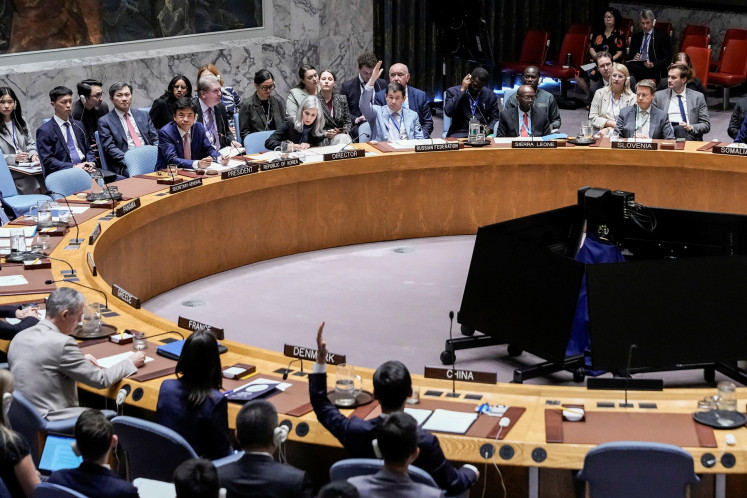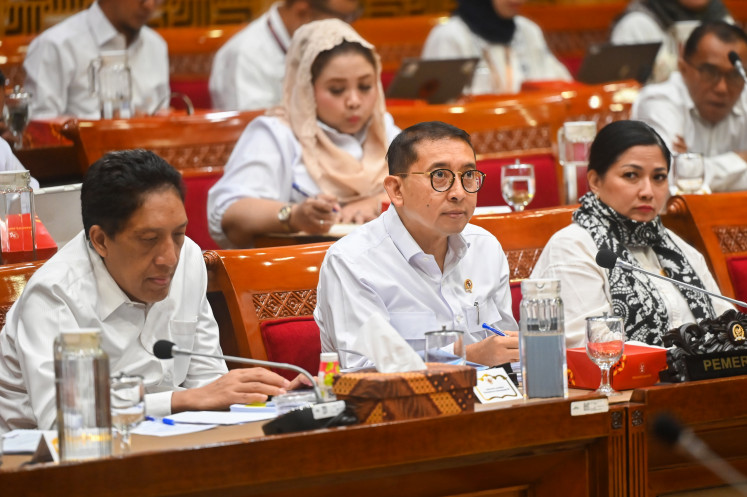Popular Reads
Top Results
Can't find what you're looking for?
View all search resultsPopular Reads
Top Results
Can't find what you're looking for?
View all search resultsStigmatized and ostracized, patients live in Tangerang leper colony
Stigmatization and discrimination have forced people with leprosy to leave their families or hometowns and settle in a colony in Tangerang, Banten, where the inhabitants support each other
Change text size
Gift Premium Articles
to Anyone
S
tigmatization and discrimination have forced people with leprosy to leave their families or hometowns and settle in a colony in Tangerang, Banten, where the inhabitants support each other.
The leper colony is located in Karangsari, Neglasari, near Sitanala Hospital, which used to specialize solely in treating leprosy, as its outpatients chose to settle in the area rather than return to their hometowns, either for the sake of treatment or to avoid discrimination.
One patient, 35-year-old Hendra, has chosen to live in the colony so that he can undergo treatment at the Sitanala Hospital instead of live with his wife and children in Tegal, Central Java, because he is afraid of being ostracized back in his hometown.
“No one in my village has ever had leprosy, so people there don’t really understand,” Hendra said recently as reported by kompas.com.
Leprosy is a chronic infectious disease that causes skin ulcers and nerve damage.
Although leprosy medication and an early detection program are available for free and can be found in health facilities across the country, many of those with the disease isolate themselves from their community, embarrassed by their condition.
Hendra said that when he was diagnosed with leprosy, his neighbors started avoiding him, although his family did not.
“They made me feel ashamed because they avoided me. But I understand that they don’t know much about this disease. They don’t know whether it is infectious or not,” he said.
Hendra chose to leave his village to live at the leper colony in Tangerang, where some 1,000 people currently live, according to kompas.com, while his wife had to remain in Tegal for work.
The colony, built in 1981 as transit area for leprosy outpatients of Sitanala Hospital, has 15 neighborhood units (RT).
Hendra was diagnosed one and a half years ago and stopped working to focus on treatment and his stamina at the recommendation of his doctor.
“I am not allowed to work because I must rest. My body responds quickly to the medication. Every month I have to check in with the doctor,” Hendra said.
Hendra has lived at the colony for four months, but his family has never visited him. “It’s OK. Perhaps they are busy.”
Now the colony is also populated by people who have recovered from leprosy but choose to remain there, such as Juleha, 34.
After living at the colony for more than 20 years to undergo treatment at Sitanala Hospital since she was in elementary school, Juleha has accepted her daily life at the colony.
“My aunt brought me here [for treatment]. It’s sad, isn’t it? I was young but had to live in this environment,” Juleha said.
Juleha could not do much because of her ailing body.
“I could not struggle to get out of living here anyway. But along the way I got used to this,” she said.
Juleha has lost fingers and parts of her legs to the disease. She uses a prosthetic she received for free from the government to help her walk.
“I’ve been using the prosthetic for 10 years. It is starting to break, so at home I drag myself around instead of using the prosthetic. My knee sometimes bleeds because of it,” Juleha said while crying.
Juleha has three children and so has household responsibilities.
“We have small children, so I am afraid it [prosthetic] will come off when I walk. I don’t walk that far anymore. I actually want a new prosthetic so that I can, for example, pick up my children’s school reports or take them to school. The one I currently use is broken,” she said.
Juleha said the harmony of the colony and its residents’ solidarity gave her the strength to go on. The residents help each other in various ways, such as with babysitting, cooking and other chores.
“Sometimes we share vegetables. I also have others to babysit my children. Perhaps it’s because of our similar condition [that we help each other],” Juleha said.
Some people living in the area who do not have leprosy frequently visit the colony, such as Raslijar Azwar, 38.
“There are five RT [neighborhood units] here. The area used to be called Kampung Transit,” Raslijar said.
“Kampung Transit was established in 1981 for leprosy outpatients to stay a month or two,” Raslijar said.
Some lepers were rejected by their families so the government set up the area specifically for people with leprosy, Raslijar said.
The colony subsequently grew as patients did not want to return to their hometowns, but instead stayed and married other lepers and started new families.
“It’s mixed here nowadays. Some leprosy patients came to visit and ended up resettling here. Others without leprosy remain here because they have houses or rent them out,” Raslijar said.
He said his parents lived in Sitanala Hospital and frequently visited the colony, so he would tag along and play in the kampung. Raslijar currently works at the hospital and frequent visits the colony to hang out instead of in his neighborhood near the colony. (ami)










